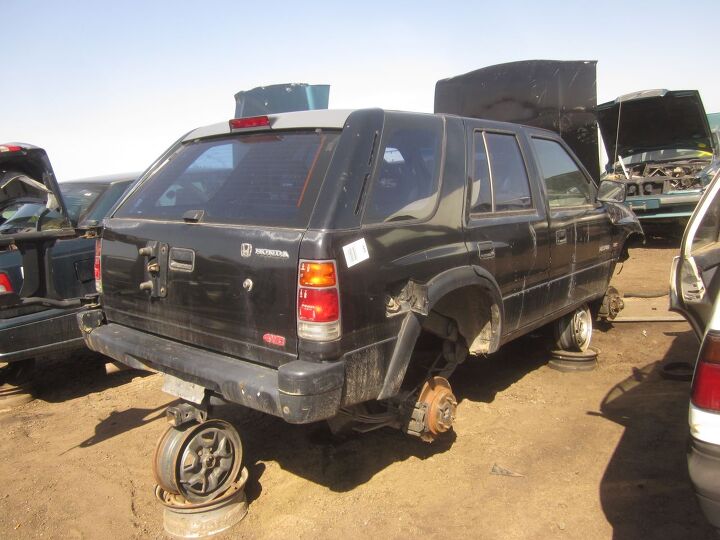The Nineties Return As Honda Revives 'Passport' Name: Report

The name of a long-defunct Honda-badged vehicle that was based on an Isuzu and built at a joint Isuzu-Subaru assembly plant will grace a new crossover, a report claims. Yes, it’s looking like Honda applied for a new Passport.
According to Automotive News, sources with knowledge of Honda’s product plans say the Nineties are indeed poised to return. The name will allegedly grace the brand’s upcoming two-row midsize crossover, slated to fill the space between the wildly popular CR-V and the range-topping Pilot.
One of the sources, citing dealer knowledge, claims Honda will show the vehicle to its dealer network in November ahead of a public debut at the Los Angeles Auto Show. The Passport’s on-sale date will arrive in early 2019.
Honda first offered the Passport in the U.S. market for the 1994 model year. The model, based on the Isuzu Rodeo, resulted from a vehicle-sharing deal struck between the two companies. Without any utility vehicles of its own, the Passport gave Honda a challenger to the likes of the Ford Explorer as the “family SUV” craze grew in popularity in Clinton-era America.
A second-generation Passport arrived for the 1998 model year. The model disappeared after 2002, not just because of GM’s increased control over the Isuzu brand, but because Honda had found its SUV sea legs.
In fielding a sub-Pilot-sized crossover, Honda adds a means to potentially poach buyers from the Hyundai Santa Fe Sport, Nissan Murano, and Ford Edge camps. And why shouldn’t it expect to? The Honda badge finds itself on several segment leaders. Even the brand’s littlest crossover, the HR-V, easily outsells other rivals in the subcompact segment.
Credit for the new model goes to Honda dealers, who apparently pressed HQ to come up with something more substantial than a CR-V. We came across a design patent granted last November that seems to show the next Passport. Built on the larger Pilot’s platform, the model looks like a cross between the defunct Honda Crosstour and the Ford Edge, and could find itself positioned as a near-premium vehicle.
If so, expect heaps of convenience and safety tech to go with the roomier two-row body. Without a doubt, there’ll be a turbocharged 2.0-liter four-cylinder found somewhere in the engine lineup. (That’s just too easy a bet these days.)
[Images: Murilee Martin/TTAC, U.S. Patent and Trademark Office ]

More by Steph Willems
Latest Car Reviews
Read moreLatest Product Reviews
Read moreRecent Comments
- AZFelix What could possibly go wrong with putting your life in the robotic hands of precision crafted and expertly programmed machinery?
- Orange260z I'm facing the "tire aging out" issue as well - the Conti ECS on my 911 have 2017 date codes but have lots (likely >70%) tread remaining. The tires have spent quite little time in the sun, as the car has become a garage queen and has likely had ~10K kms put on in the last 5 years. I did notice that they were getting harder last year, as the car pushes more in corners and the back end breaks loose under heavy acceleration. I'll have to do a careful inspection for cracks when I get the car out for the summer in the coming weeks.
- VoGhost Interesting comments. Back in reality, AV is already here, and the experience to date has been that AV is far safer than most drivers. But I guess your "news" didn't tell you that, for some reason.
- Doc423 Come try to take it, Pal. Environmental Whacko.
- 28-Cars-Later Mazda despite attractive styling has resale issues - 'Yota is always the answer.



































Comments
Join the conversation
And don't forget the (very) short-lived Canadian GM Passport brand. Basically a rebadged Daewoo/Opel Kadett. http://cartype.com/pics/7718/full/passport_optima_ad_86.jpg
I have it on good authority this will be more a shrunken Pilot than a Hondafied 2019 RDX, complete with J motor, not a turbo K.